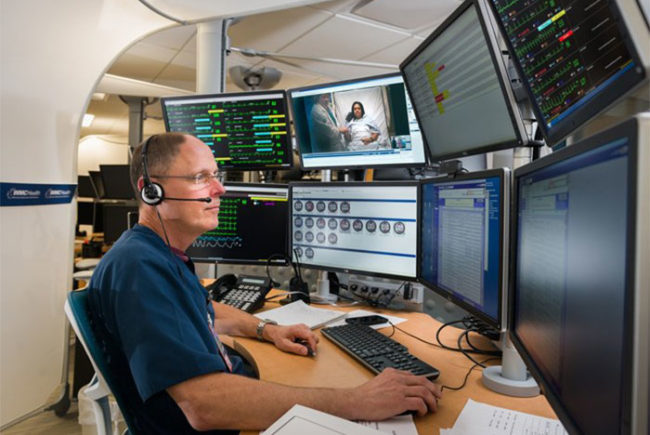Robert P. Maliff, director, Applied Solutions Group, ECRI Institute in Plymouth Meeting, Pa., explains how rapid development in medical technology requires that hospitals start the design and purchasing process early to achieve the best clinical results possible.
How does medical technology impact design decisions?
Medical technology has changed so much over the last several years that now it is incorporated into the clinicians’ workflow. Information captured by a medical device is automatically entered into an analysis software for real-time review by clinicians.
Technology is used for diagnosis and treatment of the patient, but now decisions are being made much more quickly about how to care for the patient based on information captured by devices.
Bedside devices such as a vital signs monitor or some ventilation technologies are being used by the primary caregiver or respiratory therapist to make care delivery decisions at that moment.
This affects the design because you need to have equipment placed within the room at the most appropriate location. The situation used to be that the equipment was in the room, you brought it over, you used it and you put it back in the corner.
Now we have equipment that’s being used throughout the caregiving process. So, we put equipment columns and equipment booms in more patient rooms because the equipment needs to be with the patient.
When should technology be considered in designing the space?
As early as possible. The sooner hospitals have a clear vision about what’s happening in the space is when medical technology has to be brought into the discussion.
Because construction is so expensive these days, you can’t redesign areas to accommodate a larger device or a new type of device that requires 208 voltage instead of 120 voltage. Change orders kill a project, and design revisions kill the schedule.
You have to identify the technology or at least the device categories early in the design phase. We call it technology visioning, which should occur perhaps during a master facility planning exercise.
Will the use of robots continue in surgery and in other clinical areas? What are the challenges involved?
The use of robots in surgery is exploding. Does it help to improve outcomes? There are studies that show there is reduced blood loss and, because there are no large incisions, the patient recovers faster.
But there are cost drivers to using surgical robots that may not make it beneficial to the hospital. Robots have their own reposable components, which are surgical instruments attached to the end of the robotic arms that can be used 10 times. They are sterilized and disinfected up to 10 times and then you have to throw them out.
Then there’s the service contract cost. It is a rare clinical engineering department that maintains surgical robots. Most hospitals that have surgical robots also have a service maintenance contract.
What advice do you offer when planning to purchase surgical robots?
Surgeons coming out of their residencies today have been trained on surgical robots. They don’t want to go to a hospital that doesn’t have a robot for surgery.
Conversely, there’s generally no additional reimbursement for using a surgical robot. At the beginning of its use, it is probably a longer procedure as the surgeon builds his or her skill sets and gains competencies with the technology.
Initially, the hospital may not see improved financial outcomes, but it may see improved patient outcomes. And, hopefully, that translates into improved financial outcomes.
There are a lot of issues to look at when you’re considering a surgical robot purchase. You need to consider how to deploy them, how many to deploy and what you need to do to keep up with the competition, to keep up with your surgeons’ needs.
I think a hospital that sees itself as trying to maintain its standing in the community and offer advanced procedures needs to consider implementing a robot.
On the other hand, it’s going to be very difficult for a small rural hospital to have the number of surgical procedures and the finances to be in a position to buy, operate and maintain this type of equipment.
What challenges are involved with designing and planning a hybrid operating room?
Hybrid operating rooms (ORs) are complex environments because there may be many different medical specialists using the space, such as a cardiac surgeon, vascular surgeon, neurovascular surgeon, interventional radiologist and others.
Each has unique needs for the imaging systems that go with a hybrid OR — different supplies for and different accessory equipment.
It would be difficult and challenging to have all those cases mixed into one or two hybrid OR rooms. A lot of hospital leaders are stepping back and saying, ‘Which specialty is going to use the hybrid OR?’ and then making a design decision.
Room flexibility and lighting are important. A lot of hybrid ORs are using ceiling-mounted imaging systems. Each of the medical specialties has different requirements for positioning surgical lights. When you have C-arm support tracks interfering with your lights, they can’t be positioned just anywhere.
From the beginning of a hybrid OR design, you must start planning where the technology will be located and who’s going to be using it.
What challenges do biomedical departments face in maintaining new medical technologies?
Every hospital department is under a directive to cut costs and then biomed is told, ‘Oh, we have a new fusion technology coming in and you guys have to maintain it.’ Well, there are training costs, supply costs, parts costs for that equipment, all of which goes into supporting new technology.
Biomedical engineering has to decide whether to maintain the new technology with in-house staff. Do they get a service contract or use another approach to manage the equipment?
That’s a big decision because a lot of biomed departments with which we work have been told to decrease staff as a cost-saving measure. But this affects what they are able to maintain.
With advances occurring so rapidly in medical technology, how should a hospital strategize for the future?
Hospitals have to invest their money wisely and they need a transparent process for decision-making. That’s why a lot of planning processes don’t work. Everyone is fighting for a limited amount of money and no one knows how the purchases are prioritized. If a hospital can clearly communicate and evaluate capital equipment requests and explain how they prioritize them, it helps everyone involved.
A lot of capital planning processes fail because hospitals don’t have the current pricing information and clinical evidence and they don’t present the strategy.
Many capital requests are made because something is old. However, what’s the impact on operations? What’s the impact on service? On safety? On finances? If you can answer these questions, everyone has a much better understanding of why capital funding is needed for a specific purpose.






